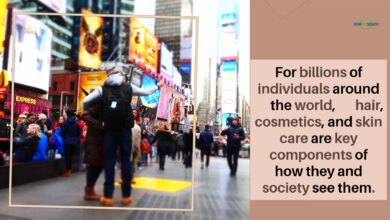Hyperpigmentation and the Danger of Skin Bleaching
By Syndi Victor
Melanocytes, the cells that create melanin, the pigment that gives skin its color, are found in the skin. When excessive pigment concentrates in a localized skin area, hyperpigmentation occurs. Hyperpigmentation happens when a region of skin gets darker than the neighboring skin, typically in a patch or spot, and is frequent in dark skin. It lasts longer and is more challenging to treat in darker complexions than in lighter skin tones.
Hyperpigmentation is often flat and looks darker than the nearby skin. Skin pigment issues are frequent among individuals of color, one of African-Americans’ five biggest dermatological concerns. Genetic causes such as freckles or skin damage, as well as medication and hormones, can cause discoloration. The structure and color of the growth vary depending on the source, but it is usually tan or brown, blue-gray, or black in hue.
Hyperpigmentation can happen in any portion of the anatomy. It may be more extensive when it occurs due to a pharmaceutical response or skin trauma. The appearance of hyperpigmentation varies based on the source and the person’s skin type. Acne, dermatitis, bug bites, and scarring are all significant causes of this condition. Individuals should apply substantial sun protection to shield the area until hyperpigmentation fades. Sunscreen with an SPF of 30 or higher is encouraged. Skin-lightening and ‘whitening’ treatments are sold all over the world.
According to a recent study of these commercially available goods, many still retain unsafe quantities of mercury. Mercury has been found in cosmetics, particularly skin-lightening lotions. Because of its capacity to decrease melanin formation, which provides skin color, and lighten hyperpigmentation, such as dark patches, freckles, and imperfections, the chemical is extensively utilized in such items. Mercury, on the other hand, is highly harmful to human wellness. Using mercury-containing skin lightening products regularly lowers susceptibility to potential pathogens, as well as skin irritation, discoloration, and mottled skin. Mercury usage is also related to protracted eye impairment, breathing, neurological, and kidney disease.
Furthermore, those who use mercury-rich SLPs may unintentionally endanger other family members through frequent proximity. According to studies, dwellings may need to be decontaminated after using such goods to decrease mercury exposure. Skin bleaching is not therapeutically essential, but it is something many individuals undertake for aesthetic reasons. People may believe that this will make them more beautiful or self-assured. On the other hand, the custom of seeking to lighten a person’s color is linked to racism. Racism portrays white people as preferable to people of different races and ethnicities. This is also true of beauty standards, with individuals viewing white European attractiveness as the most appealing.
Colorism, which is connected to but separate from racism, is another important cause of skin bleaching. Colorism is a discriminatory behavior that favors lighter skin tones over darker complexions, interracially (between groups) and ethno-racially (across groups). It can affect people of any race or ethnicity. Colorism is founded on racism because it assigns value to people based on their skin color. Accepting white beauty ideals has led to unhappiness for African American and Indian women regarding their skin and hair resulting in efforts to lighten both. Skin bleaching was forecasted among pupils at the University of Lagos by sensitivity to ads and self-esteem concerns.
It demonstrates how negative skin tone messages can significantly impact folks ‘ identity and conduct. On the other hand, receiving encouraging messages may boost self-esteem and lessen the drive for skin bleaching. According to a new report, self-acceptance and awareness about the consequences of skin bleaching may effectively deter the trend. Vitamin C may help to minimize hyperpigmentation, especially acne scars. Retinoids, such as retinol, can speed up the skin renewal cycle, which may aid wound healing.
Bleaching of the skin is a standard cosmetic procedure used all over the globe. There is no way to lighten someone’s skin complexion that is both secure and dependable. Substances or DIY solutions that purport to do so come with many dangers. Hydroquinone lotions are authorized and over-the-counter and can sometimes cause persistent discoloration. If an individual is worried about hyperpigmentation or contemplating skin whitening, the best action is to consult a physician.




